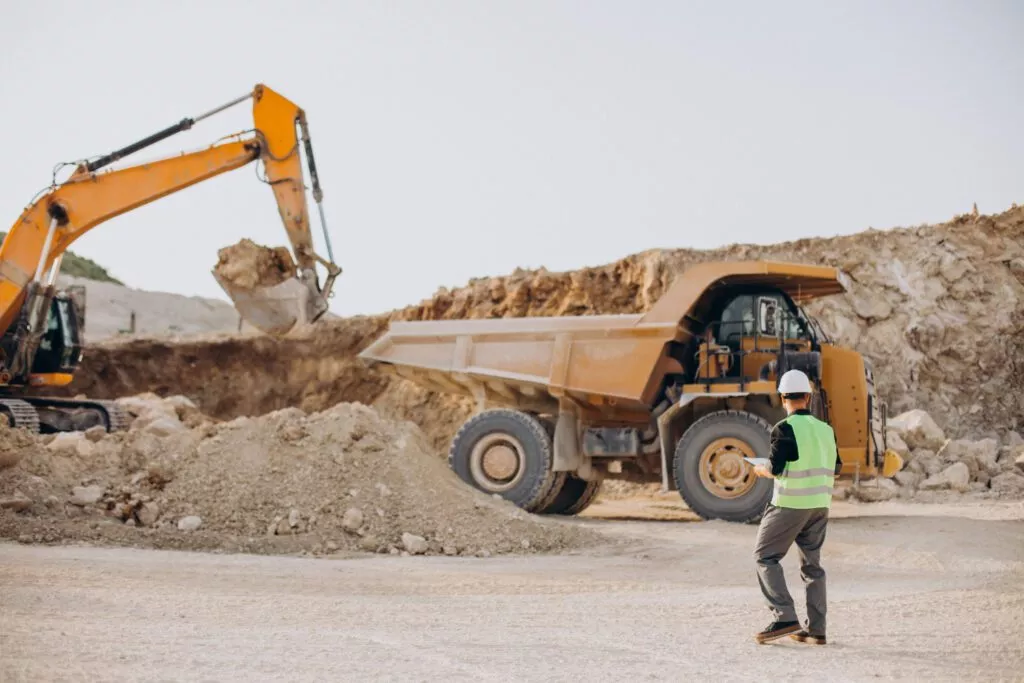Mining is essential to extract the earth’s natural resources. It is the process to obtain valuable geological resources such as fossil fuels, minerals, and more. Different types of mining methods are used to extract these non-renewable resources safely and responsibly.
In this blog, we look at the four main types of mining methods used to acquire different materials from the earth.
Different Types of Mining
There are four different types of mining methods most commonly used. Before a mining operation starts, the type of mining method chosen is determined by the kind of resource being extracted, the geological location of the resource (whether it is on the earth’s surface or below), and the chances of the method to profitably extract the resource.
Each method comes with its own set of pros and cons – all of which we discuss in detail below.
1. Underground Mining
Underground mining, as the name says, is a method where the mining process occurs below the earth’s surface. It is mostly used to extract minerals located deep under the earth’s surface, such as gold, silver, and lead.
The underground mining process involves digging up the earth and building tunnels and shafts deep into the earth’s surface that can safely reach the deposits of resources. This is a relatively costly method. So, the potential economic value of the resource being extracted is considered before deciding to proceed with this method.
Underground mining can be categorised into the following:
- Room and pillar mining –The underground tunnels are built in a chessboard-like pattern with huge square pillars installed in between. This is a common technique for mining coal.
- Narrow vein stopping –The shafts are built alongside geological veins, which means crystallised minerals that can be found appearing in sheet-like patterns. This method is used to mine platinum.
- Block caving – This is a method for bulk underground mining. The process involves undermining the ore body, allowing it to progressively collapse under its weight and
2. Surface Mining
The surface mining method is used to extract minerals found close to the earth’s surface. It is a more cost-effective procedure than underground mining. It is a widely used method used to extract minerals like coal, iron, and bauxite.
In this process, complete plant life is removed from the soil, and then the bedrock layer is cleared to gain access to the resource deposits. Surface mining can be done in the following ways:
- Strip mining – This surface mining method is used only to extract shallow deposits. The deposit of resources is very close to the surface, covered only by a layer of topsoil and weathered rocks. In strip mining, the soft layer of earth is removed in strips using an industrial shovel or dragline before mining the layer of mineral lying below.
- Open-cut mining – This method is also known as open-pit mining. A large open pit or borrow pit is dug out to extract the minerals. In the open-cut mining method, resources are extracted from the earth’s surface. In this process, the topsoil is removed first before blasting off the underground rocks. Once the layer of deposits is reached, an open pit is dug to extract the resources.
Open-cut mining is usually continued until the resource deposits in that particular mine are not depleted enough. Once it is no longer an active mine, the open pit is converted into a landfill for solid wastes. It may also be used for land rehabilitation purposes.
- Mountaintop removal mining –In this type of surface mining, resources are extracted from underneath mountaintops. Explosives are used to break up layers of rocks before they can reach the layer of deposits.
- Dredging –In this method, small dredges are created to mine materials underneath water bodies like rivers, lakes, and oceans. The resources are pulled up via suction through the dredges.
3. Placer Mining
Placer mining is a method that uses water to separate precious minerals from sediments. This form of mining usually takes place in riverbeds, sands, and other such sedimentary environments. The process involves sifting valuable minerals from the large accumulation of sediments. The extracted materials are rinsed and sluiced to get the valuable mineral out. This method is most widely used for gold, platinum, titanium, and gemstone extraction.
4. In-Situ Mining
In-situ mining is a method that can successfully recover minerals from below the earth without extracting rocks and ore to the surface. A chemical solution is injected into the ground to dissolve the ore in its original location. Next, the solution is pumped back up to the earth, which now contains the minerals of the dissolved ore. This solution can be processed in the lab to get back the minerals. In-situ mining is commonly used to extract uranium. This method of mining causes very little environmental disturbance to the surface.
All four different types of mining methods are important and play a key role in resource extraction. A mineral’s location, financial value, and chemical composition – all of them play a role in determining the final mining method chosen. If you need help mining advice, contact us at https://www.australianminingservices.com.au/.

